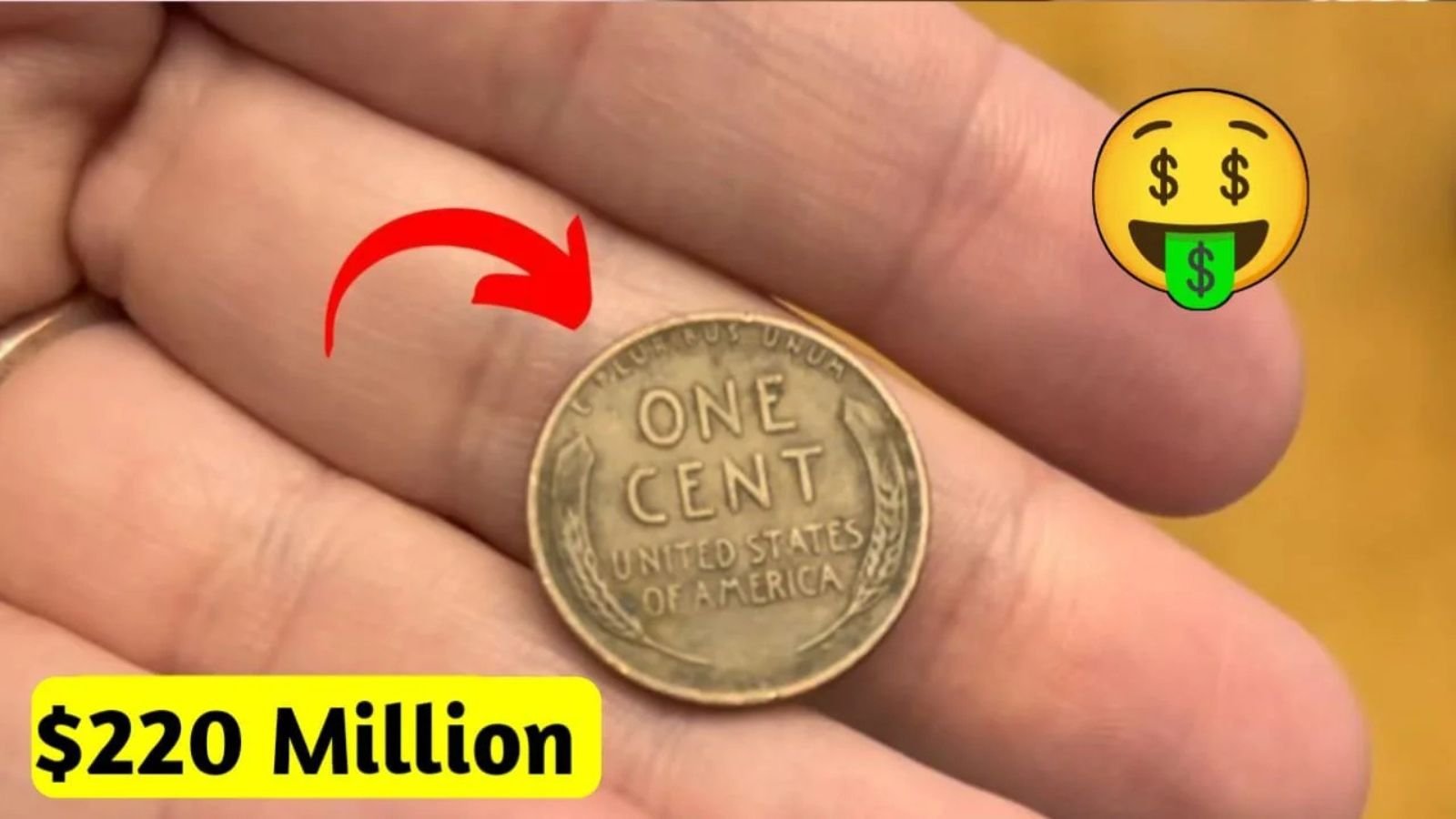Imagine reaching into your pocket for some loose change and pulling out a coin worth millions. It sounds like something straight out of a dream, but that’s exactly the incredible reality connected to a rare Lincoln Wheat Penny. Valued at an astounding $3.5 million, this tiny piece of history continues to fascinate collectors and casual coin hunters alike. Even more thrilling is the idea that a few of these rare pennies could still be floating around in everyday circulation, just waiting to be discovered.
In this detailed article, we’ll dive deep into the history of the Lincoln Wheat Penny, explore what makes certain ones so valuable, and explain how you might spot one in your own pocket change.
History of the Lincoln Wheat Penny
The Lincoln Wheat Penny, affectionately called the “Wheat Cent” by collectors, made its debut in 1909. It was introduced to commemorate the 100th anniversary of President Abraham Lincoln’s birth, making it the first U.S. coin to feature the image of a real historical figure rather than a symbolic representation like Liberty.
The coin’s obverse proudly features a portrait of Lincoln, designed by Victor David Brenner, while the reverse displays two stalks of wheat curving along the sides. These wheat stalks were meant to symbolize America’s agricultural prosperity and strength. The Lincoln Wheat Penny remained in circulation with this original design until 1958, when it was replaced by the now-familiar Lincoln Memorial design.
For nearly half a century, millions of Lincoln Wheat Pennies were minted and used across the United States. However, only a select few varieties have become highly prized today—transforming from everyday change into million-dollar treasures.
The Lincoln Wheat Penny Valued at $3.5 Million: Is It Really Out There?
Many might wonder: how can a simple penny be worth $3.5 million? Surprisingly, it’s not just a fantasy. Certain rare versions of the Lincoln Wheat Penny have fetched astronomical prices at auctions, with the most legendary being the 1943 Copper Penny. According to experts, there’s a strong possibility that a few examples remain undiscovered in circulation.
Overview Table: Lincoln Wheat Penny Facts
| Category | Details |
|---|---|
| Coin Name | Lincoln Wheat Penny |
| First Year of Minting | 1909 |
| Composition | 95% Copper, 5% Zinc and Tin |
| Notable Rare Varieties | 1943 Copper Penny, 1909-S VDB |
| Current Estimated Value | Up to $3.5 Million |
| Still Found in Circulation? | Extremely Rare but Possible |
| Designer | Victor David Brenner |
| Original Mint Price | 1 Cent |
Why Is a Lincoln Wheat Penny Worth Millions?
Most Lincoln Wheat Pennies you find are only worth face value or slightly more—maybe a few cents to a few dollars depending on their condition. So what makes a handful of these coins worth millions?
Here’s the breakdown:
- Material Mistake: In 1943, due to wartime efforts, pennies were supposed to be made from steel coated with zinc to save copper for ammunition. However, a few copper blanks were accidentally used to mint pennies that year. These 1943 Copper Lincoln Wheat Pennies are some of the rarest coins in existence.
- Extremely Limited Mintage: Very few of these mistake coins exist today, and because of their scarcity, collectors are willing to pay incredible sums to own one.
- Condition and Grading: A coin in near-perfect condition, graded MS-68 or higher by professional grading services, can exponentially increase in value.
- Historical Significance: Coins like the 1909-S VDB hold historical weight, featuring the initials of the coin’s designer that were later removed due to controversy.
The right combination of historical importance, rarity, material anomaly, and pristine condition can transform a humble Lincoln Wheat Penny into a $3.5 million treasure.
How to Identify a Valuable Lincoln Wheat Penny
Finding a Lincoln Wheat Penny worth millions may seem like finding a needle in a haystack, but knowing what to look for greatly increases your chances. Here’s what you need to keep an eye out for:
1. Examine the Date Carefully
Focus on pennies minted in 1943. Most of them will be steel, but if you find a 1943 penny that does not stick to a magnet, it could be a rare copper version.
Also, 1909 is an important year. If you spot a 1909 penny, especially with an “S” mint mark (San Francisco) and the initials “VDB” on the back near the rim, you could be holding a highly valuable coin.
2. Check for Mint Marks
Look underneath the date for tiny letters like “S” (San Francisco) or “D” (Denver). Some mint marks, combined with certain years, dramatically affect a Lincoln Wheat Penny’s value.
3. Assess the Coin’s Condition
A heavily worn coin is usually worth less than one in mint or near-mint condition. If your Lincoln Wheat Penny shows clear features, minimal scratches, and strong detail, it might be worth getting it professionally graded.
4. Look for Errors
Minting errors can make a coin more valuable. Look for things like:
- Double dies (where the design appears twice)
- Off-center strikes
- Missing mint marks
All these anomalies can add substantial value to a Lincoln Wheat Penny.
Keeping a magnifying glass handy and closely inspecting your change could someday pay off in a very big way.
Are Rare Lincoln Wheat Pennies Really Still Out There?
It may sound unlikely, but believe it or not, rare Lincoln Wheat Pennies are occasionally discovered even today. Sometimes, old coins tucked away in jars, boxes, or inherited coin collections resurface, and rare coins end up back in general circulation through estate sales or casual coin exchanges.
Coin collectors have long known that bank rolls—especially ones that have been untouched for decades—are treasure troves for finding rare coins. Searching through “wheat rolls” (rolls containing older pennies) from banks, estate sales, or auctions has led many to incredible discoveries.
Although the odds are tiny, the possibility that a $3.5 million Lincoln Wheat Penny is sitting unnoticed somewhere out there keeps the dream alive for hopeful collectors.
FAQs About the Lincoln Wheat Penny Worth $3.5 Million
Q1: Why is the 1943 Copper Lincoln Wheat Penny so rare?
A1: During World War II, copper was needed for military purposes, so pennies were made from steel. However, a few copper planchets were mistakenly left in the presses, resulting in a few rare 1943 Copper Lincoln Wheat Pennies.
Q2: How can I tell if I have a 1943 Copper Lincoln Wheat Penny?
A2: Perform a magnet test. If the penny sticks to a magnet, it’s a common steel penny. If it doesn’t stick, you may have a rare copper version. Always consult a professional appraiser to confirm.
Q3: Is it legal to sell a rare Lincoln Wheat Penny if I find one?
A3: Absolutely! If you discover a valuable Lincoln Wheat Penny, you have every right to sell it to private collectors, auction houses, or coin dealers. Many auction houses specialize in rare coins and can help you get top dollar.
Q4: Besides the 1943 Copper, are there other valuable Lincoln Wheat Pennies?
A4: Yes! The 1909-S VDB, the 1914-D, and the 1922 No D varieties are also highly sought after by collectors and can fetch thousands of dollars depending on their condition.
Q5: Where should I sell my Lincoln Wheat Penny if it turns out to be valuable?
A5: Trusted coin dealers, reputable auction houses, or certified numismatic organizations are your best options. It’s critical to have the coin authenticated and appraised before selling.
Final Thoughts
The story of the Lincoln Wheat Penny worth $3.5 million continues to capture the imaginations of treasure hunters, collectors, and everyday people alike. While the odds of stumbling upon one are slim, they are not zero—and that’s what makes the hunt so exciting.
Whether you’re a seasoned collector or a casual hobbyist, taking a moment to examine your spare change could someday lead to an unbelievable discovery. The next time you receive a handful of pennies, remember: hidden among them could be a tiny copper coin that holds a multi-million-dollar secret. Keep looking, stay hopeful, and you might just find the Lincoln Wheat Penny that changes your life forever.
Some Important Link
| Telegram Group | Click Here |
| WhatsApp Group | Click Here |
| Home Page | Click Here |













